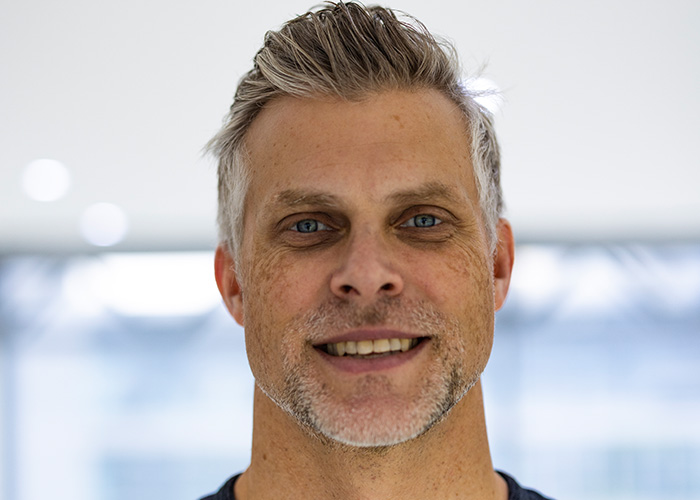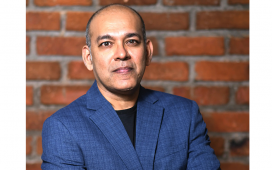
A year ago, following the announcement of Omnicom winning the Mercedes-Benz account, RAPP MENA created a unique marketing solution by Team X in Dubai.
Team X features a creative team, social media, media strategy, data analytics, public relations, a GD live support desk, account management, to name a few.
Curtis Schmidt, President and Chief Executive Officer for RAPP MENA, was at the forefront of developing the Team X team and infrastructure in the UAE.
What’s the current business model and strategy, and how has it changed over the years?
The current business model in place is a bespoke operating model specifically designed to cater to the GD (General Distributors) business within Mercedes-Benz. The GDs sell products and services on behalf of Mercedes-Benz, functioning as private businesses. Due to Mercedes’ shift in focus and investment into electric vehicles, it became strategically imperative to develop a ‘hub function’ that could effectively support the GDs in their day-to-day operations as Mercedes-Benz marketing pivots towards more brand building activities.
This new hub model emphasises lean operations with a renewed focus on brand and PR, while also giving increased support for tactical marketing to push sales and volume. With the emergence of electric vehicles and a greater reliance on halo products, the support for brand marketing became more important to position Mercedes-Benz as a luxury brand. The hub function we now have in Dubai covers the consolidation of three large geographical regions: Middle East, Africa, and parts of Europe.
When Omnicom won the account to service Mercedes-Benz globally in 2021, the team in Dubai collaborated with MBCME (Mercedes-Benz Cars Middle East) to understand the brand’s challenges and opportunities for GDs. Over three intense days, we devised a completely bespoke model tailored to the GDs needs and their transformational shift towards “think and act like a luxury brand”. This strategy moves away from product-focused marketing towards brand-led communication, enabling Mercedes-Benz to establish a clear ownership and linkage to luxury.
The hub model we deployed is not solely focused on traditional communication, but also involves various touchpoints a consumer may encounter when interacting with the vehicle manufacturer, such as social media, creative ideation and production, advanced data analytics and insights, website migration, maintenance and robust GD support that covers topics from onboarding to monthly reports.
We collaborate on a common and dedicated portal that houses all assets to ensure quick and easy accessibility. The integrated team works closely with functional areas of Mercedes-Benz daily, fostering a close partnership where mutual learning, growth, and achievement are facilitated through common key performance indicators.
The success of this model has led to its expansion in both the complexity of the scope of work and geographical coverage. The baseline services are delivered through a marketing portal, providing access to all brand assets, playbooks, and templates.
Once the GDs subscribe to these baseline services, they can engage with the hub for bespoke marketing solutions tailored to their specific country-level requirements, such as deploying, monitoring, and optimising a comprehensive 360-degree marketing campaign.
What are your global ambitions?
Our global ambitions revolve around successfully implementing this model in markets based in Central and East Asia, as well as expanding into various countries in the Americas. By servicing more markets, we can achieve a lower cost per GD, making the entire model more attractive to individual businesses. Essentially, we aim to leverage the economies of scale to create more value by increasing the return on investment for each GD.
What initiatives do you have in place for expansion and growth?
Apart from geographical expansion, we would like to explore opportunities in customer relationship management (CRM) support to the GDs further. As brand communication becomes a priority, it opens possibilities for engaging in long-term, multi-wave personalised communication based on behavioral and first-party data. This introduces a new level of complexity because historically, GDs did not have a standardized technical blueprint for their tech stack.
Each GD had significant variations in how they built their technology infrastructure, given the diverse markets and local vendors. Therefore, if we begin conducting data and technical audits, we will have to approach it technology-agnostic.
The result, if we can align GDs on similar technical platforms, it enables consistency and facilitates a unified customer experience. This in theory allows for the sharing of best practices that are suitable for multiple markets, ultimately reducing operating costs by bundling functions and services.

What were the biggest challenges in setting up this solution?
Setting up this solution presented two significant challenges. Firstly, when assigned the account, we had a tight timeline of just 60 days to scale up the team to more than 20 full-time equivalents (FTEs) while implementing three new technologies. The team needed to collaborate effectively and deliver solutions that met the high expectations of Mercedes-Benz, leaving no room for errors.
Secondly, scalability posed another challenge. We had to ensure that our resources and rate cards were competitive in various markets. Inflation and the increasing cost of living have put significant pressure on cost control for team x. Additionally, many local GDs already had longstanding relationships with their local agencies.
As the “new guy” offering solutions from a hub-based model, it isn’t always easy to compete. However, after multiple validations, the model has become more valuable to the end user and increasingly challenging to compete with when looking at cost vs. quality.
Where do you see the biggest potential and opportunity?
The greatest potential and opportunity lie in linking data to 360-degree experiences and communication by leveraging zero, 1st, 2nd and 3rd party data. This enables us to create personalised, one-to-one communication that is tailored to individual customers.
By utilising customer data for data modeling, we can for example enhance the effectiveness of media buying. This area of leveraging first-party data for bespoke, tailored communication represents a significant opportunity, particularly as the reliance on customer data continues to grow in importance and the ‘death of the cookie’ is no longer a buzz world, but an everyday reality.
By Curtis Schmidt, President and Chief Growth Officer, RAPP MENA









